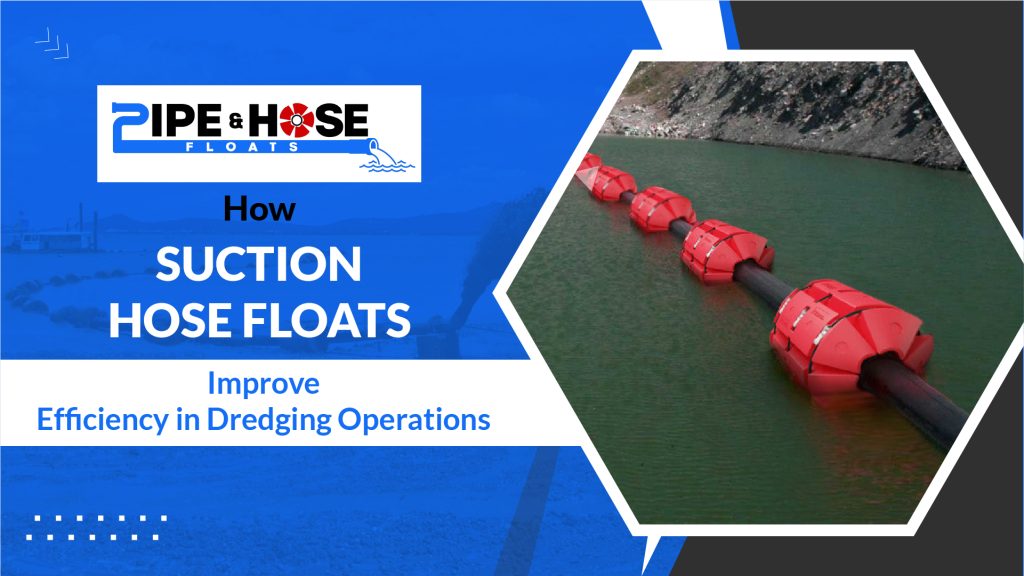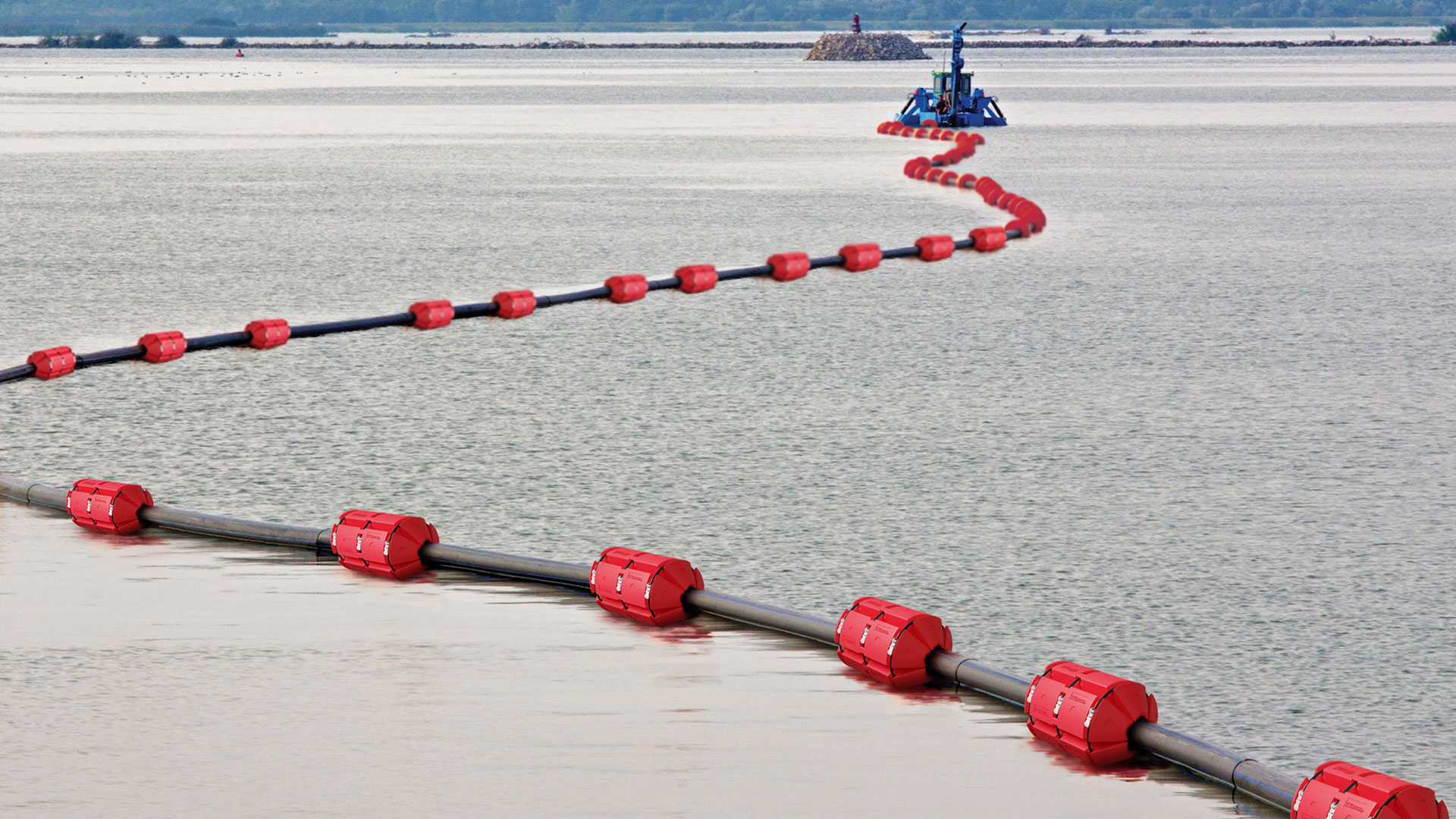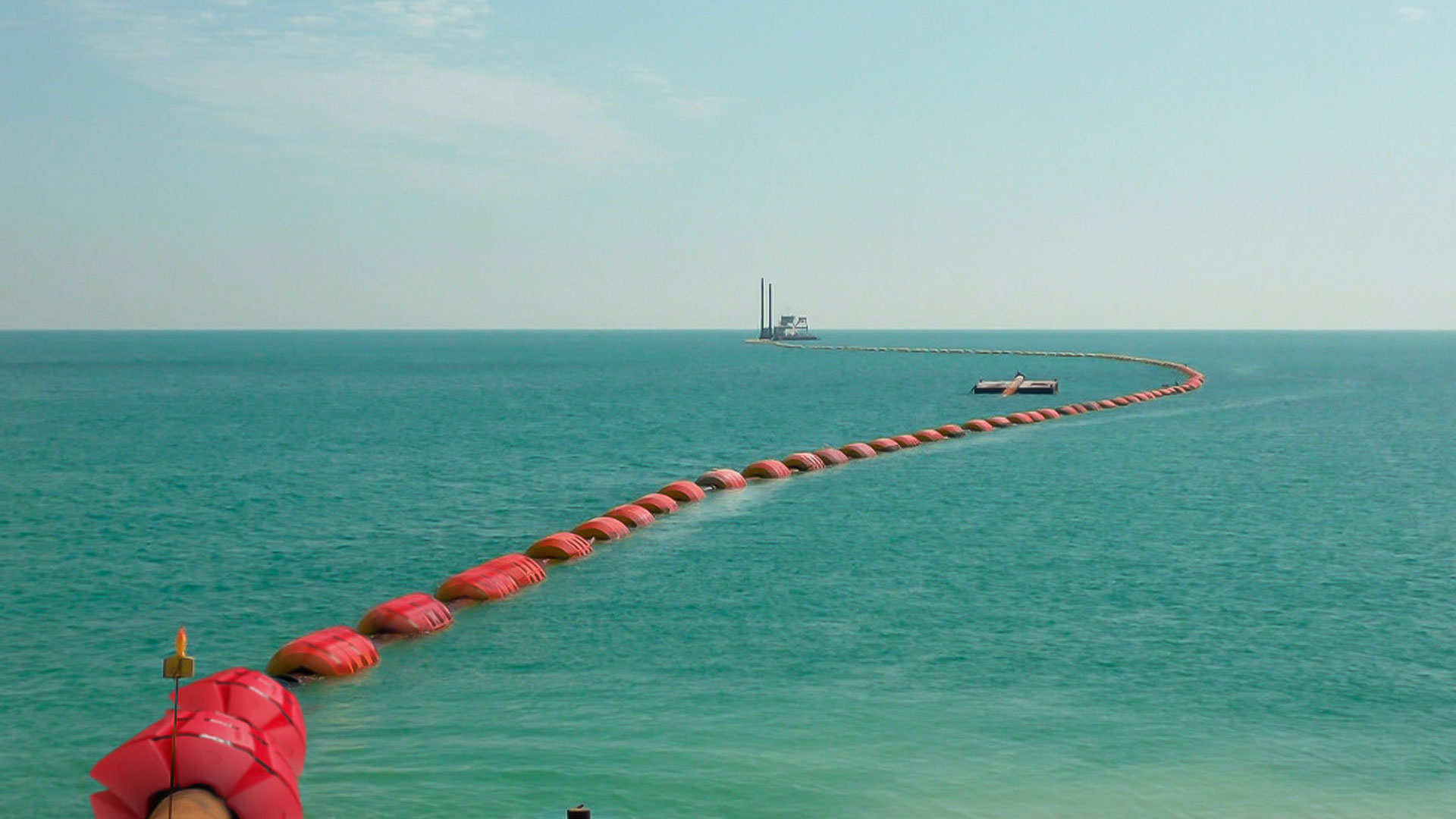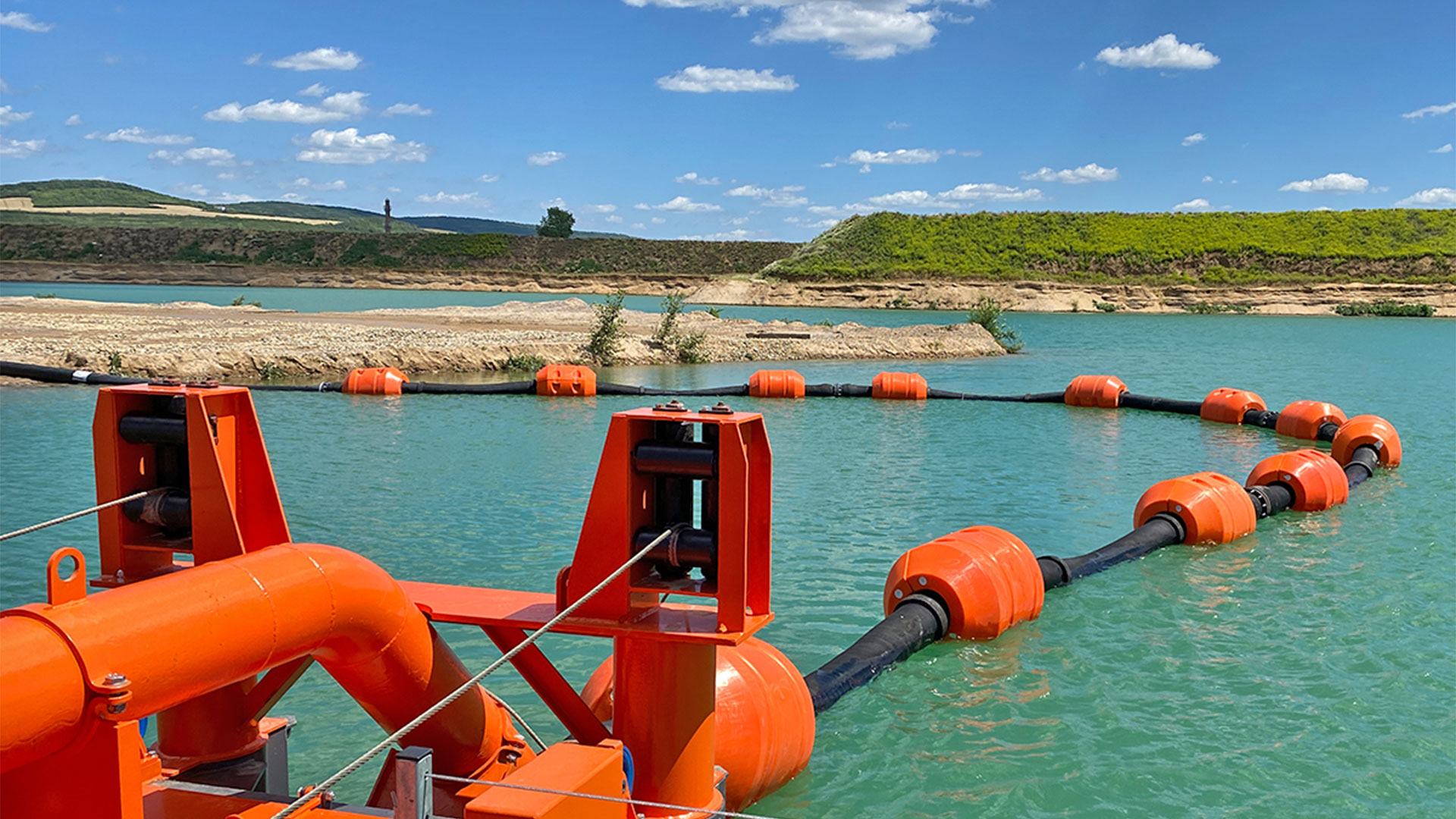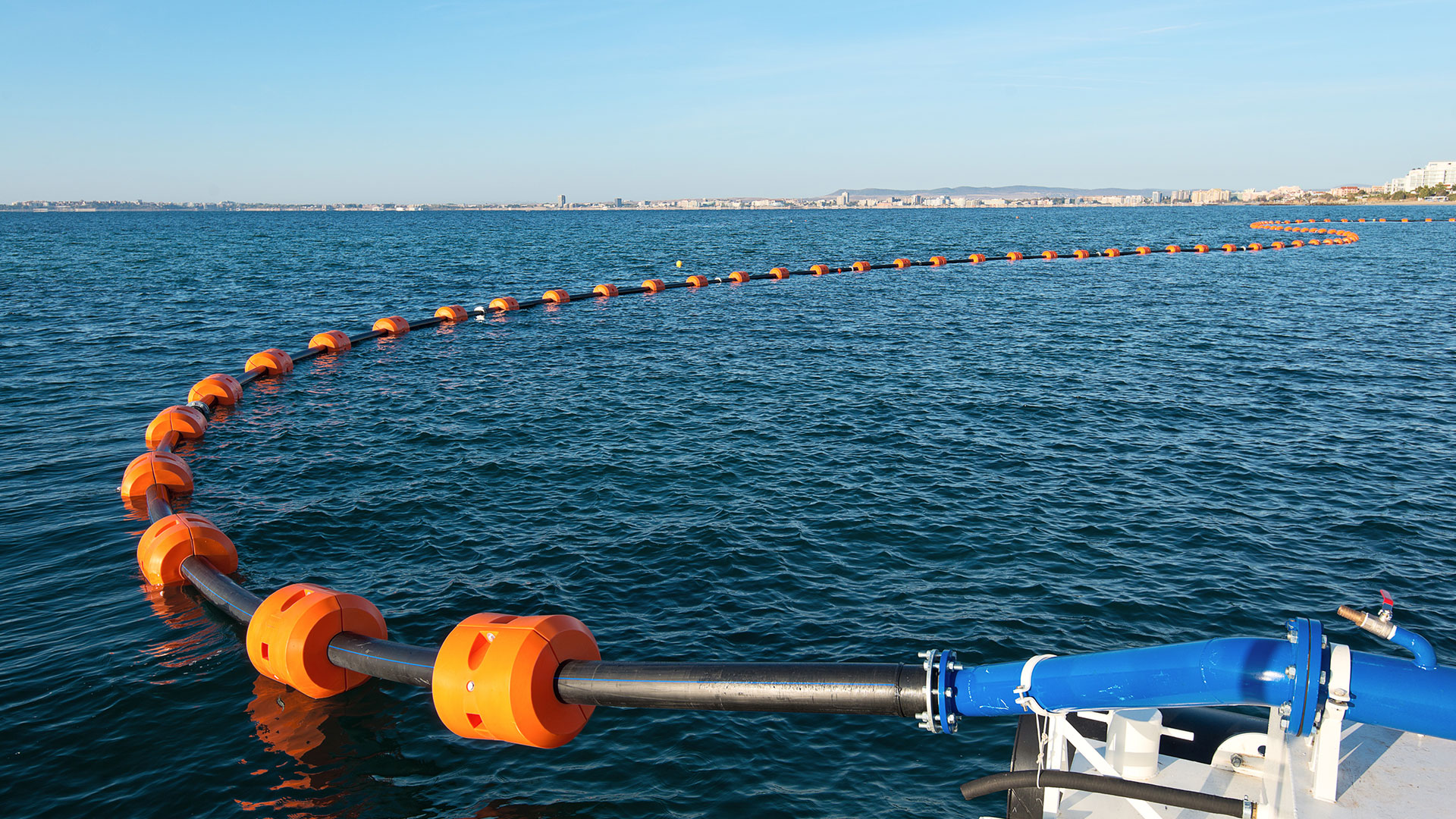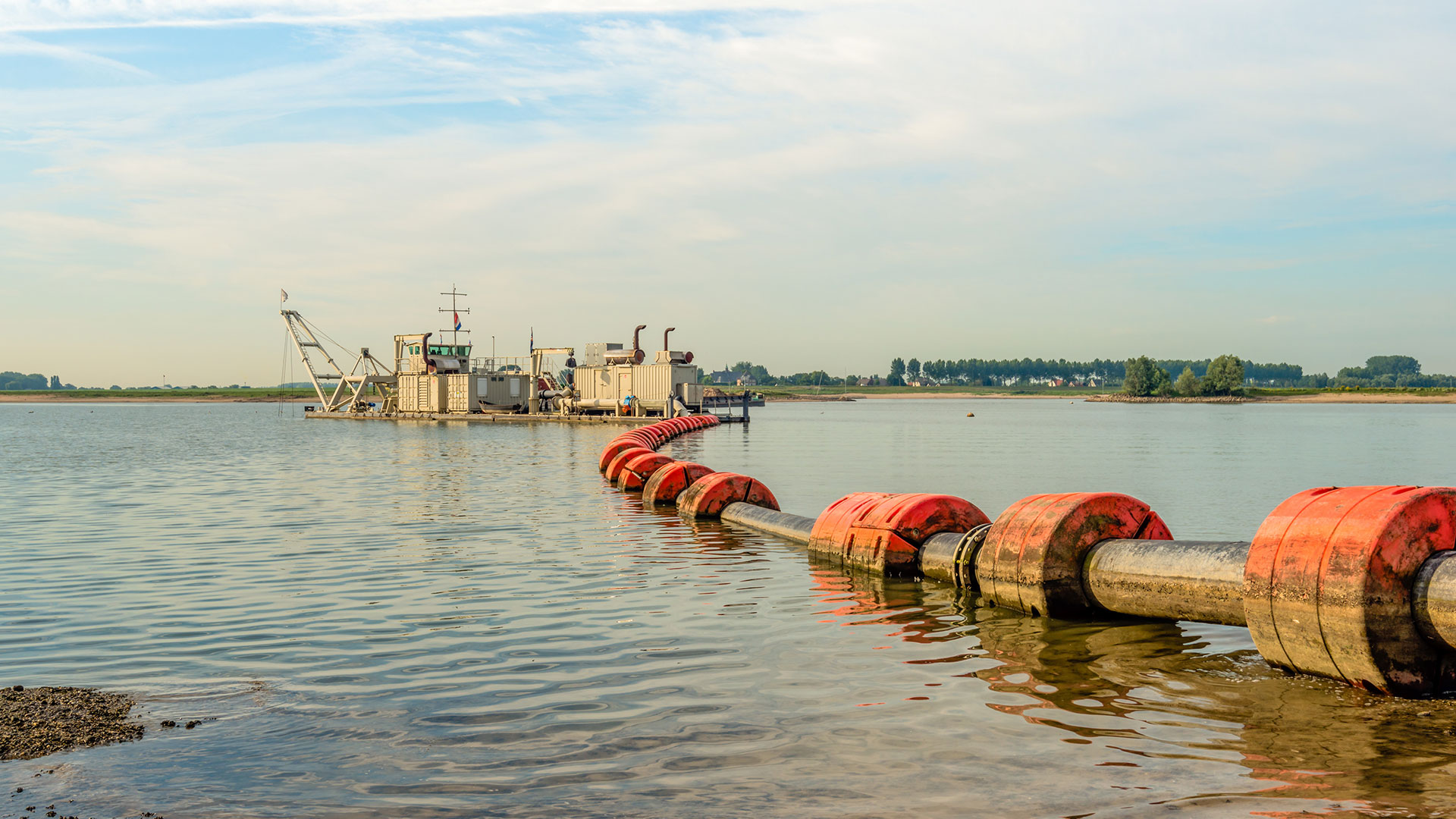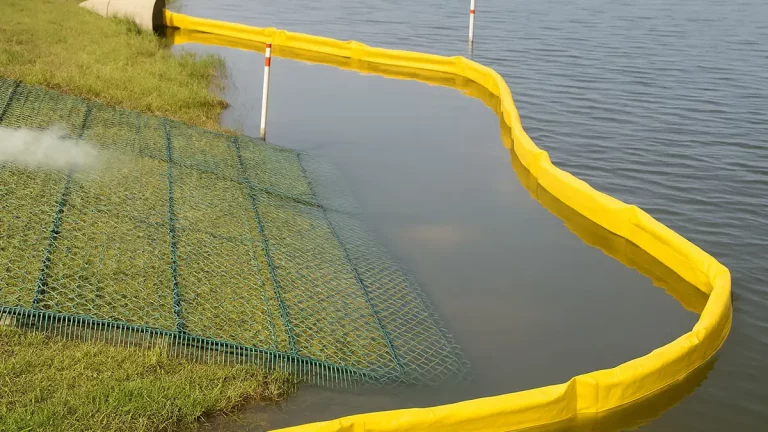Introduction
Dredging is a crucial process in various industries, including construction, mining, and environmental restoration. It involves the removal of sediments, debris, and other materials from the bottom of bodies of water, such as rivers, lakes, and harbors. Whether it’s for creating navigable channels, deepening ports, or removing harmful contaminants, dredging is a highly specialized task that requires the right equipment and techniques. One such piece of equipment that plays an essential role in ensuring the success of these operations is the suction hose float.
This is where the suction hose float comes in. These innovative tools are designed to support and buoy suction hoses, ensuring that they stay at the correct depth, remain free from damage, and enhance overall operational efficiency. In this article, we will explore how the suction hose float can improve the efficiency of dredging operations and help operators achieve better performance, safety, and cost-effectiveness
I. What Are Suction Hose Floats?
Suction hose floats are specialized devices that are attached to suction hoses during dredging operations. These floats are designed to provide buoyancy, keeping the suction hose elevated and afloat on the water’s surface or at a desired depth. They are typically made of durable, buoyant materials such as polyethylene, polyurethane, or PVC and come in various shapes and sizes to suit different dredging needs.
The primary function of a suction hose float is to keep the suction hose at the optimal position during dredging. By floating the hose, the float prevents it from sinking to the seabed, reducing the risk of damage or wear from dragging along the bottom. Suction hose float also helps maintain the hose’s alignment, ensuring that it remains in the best possible orientation for efficient suction and material transfer.
There are different types of suction hose float available, including:
- Modular Floats: Suction hose floats of this type offer exceptional flexibility and scalability, allowing them to be adjusted to the unique requirements of any dredging operation. These floats are particularly useful in floating suction hose applications where different configurations and buoyancy levels are needed to accommodate fluctuating dredging depths.
- Rigid Floats: The suction hose floats in this category provide a high level of stability and support, ensuring that the hose stays properly positioned even in rough or deepwater conditions.
- Flexible Floats: Flexible suction hose floats are designed to conform to the contours of the seabed, providing support to the hose while ensuring it remains properly aligned even in challenging environments. Flexible floats can be especially valuable in floating suction hose applications.
II. How Suction Hose Float Improves Dredging Efficiency
Suction hose float is much more than just accessories to the suction hoses—they are integral to improving the overall efficiency and effectiveness of dredging operations. Here’s how they contribute:
1. Maintaining Optimal Hose Positioning
Suction hose float addresses this challenge by maintaining the hose at the optimal position, typically just above the seabed or at the right depth in the water column. This ensures that the hose remains free from obstacles, minimizing the risk of blockages or tangling. Proper hose positioning is essential for maximizing the dredging efficiency, as it allows for consistent suction and material transfer.
2. Enhanced Mobility and Flexibility
Suction hose float significantly improves the mobility and flexibility of suction hoses. Because the floats keep the hoses buoyant and stable, they are easier to reposition or adjust, even in challenging conditions. This enhanced flexibility means that dredging operators can respond quickly to changes in the environment, ensuring that the operation runs smoothly without unnecessary delays.
3. Reduced Hose Wear and Tear
This is where suction hose floats play a crucial role in extending the lifespan of your equipment. The underwater environment can be harsh on dredging equipment, particularly on suction hoses, when a hose is in constant contact with the seabed or submerged debris.
By keeping the suction hose elevated and afloat, the suction hose float reduces the amount of direct contact between the hose and the seabed. This significantly decreases the wear and tear on the hose, prolonging its lifespan and reducing the need for maintenance. Not only does this lead to cost savings, but it also minimizes the risk of downtime due to equipment failure.
4. Increased Flow Capacity
Suction hose floats directly contribute to increasing the flow capacity of dredging operations by keeping the suction hoses positioned and aligned for optimal performance. This enhanced efficiency helps operators meet project deadlines faster, reduces operational delays, and ultimately improves the overall success of dredging projects.
Suction hose float helps to maintain the correct orientation of the hose, ensuring that it remains open and unobstructed. By reducing the chances of kinking or collapsing, the floats allow the hose to maintain a consistent flow of material, improving the overall flow capacity of the dredging operation. This, in turn, speeds up the process and enhances productivity.
III. Key Benefits of Suction Hose Floats
Suction hose float offers several distinct advantages that contribute to the overall success of dredging operations:
1. Cost Savings
By reducing the need for constant hose repairs and replacements, suction hose float provides significant cost savings for dredging operations. The reduction in wear and tear extends the lifespan of the hoses, which means less frequent purchasing of replacement parts or equipment. Additionally, the ability to maintain the suction hose in optimal condition reduces the downtime associated with hose failure, leading to more efficient operations.
2. Improved Safety
Safety is a critical concern in dredging operations, where equipment failure or hose tangling can lead to accidents and injuries. Suction hose float contributes to safety by keeping the hoses elevated and preventing them from getting caught on underwater obstacles. This reduces the risk of accidents caused by hoses becoming snagged or twisted, ensuring a safer working environment for the crew.
3. Longer Hose Lifespan
As mentioned earlier, one of the main advantages of suction hose float is the reduction in wear and tear on the hose. This protection helps extend the lifespan of the hoses, saving money on replacements and ensuring that the dredging operation continues smoothly without the need for frequent maintenance.
IV. Types of Suction Hose Floats
A Suction hose float comes in a variety of shapes and designs to suit different dredging needs. Here’s a closer look at the three most common types:
1. Modular Floats
Modular suction hose float is made up of individual sections that can be connected to form a longer, continuous float. This type of float is highly customizable, allowing operators to adjust the length and configuration to suit the specific requirements of their dredging project. Modular floats are ideal for large-scale or long-term dredging operations, where flexibility and adaptability are important.
3. Flexible Floats
Flexible suction hose float offers greater versatility and adaptability. These floats are often used in irregular or complex dredging environments where the seabed is uneven or the conditions are unpredictable. Flexible floats allow for easy adjustment to the hose’s positioning, ensuring that the dredging operation can continue smoothly, regardless of the waterbed’s surface.
V. Choosing the Right Suction Hose Float for Your Dredging Operation
Selecting the right suction hose float is critical for optimizing dredging performance. The appropriate float ensures that the suction hose stays properly positioned, reducing the risk of damage, improving efficiency, and minimizing maintenance costs. However, with a wide variety of floats available, making the right choice requires careful consideration of several key factors. Here’s a closer look at the crucial elements to keep in mind when selecting a suction hose float for your dredging operation:
1. Hose Size
One of the most important considerations when choosing a suction hose float is the size and weight of the suction hose itself. The float needs to provide adequate buoyancy to support the entire weight of the hose and keep it elevated in the water. If the float is too small or inadequate, the hose could sink to the seabed, potentially causing damage or reducing the efficiency of the dredging operation. On the other hand, an oversized float may be unnecessarily bulky or cumbersome.
2. Water Depth
The depth of the water at the dredging site also plays a significant role in selecting the right suction hose float in shallow dredging operations; where the suction hose is not expected to be positioned too deep underwater, smaller and less buoyant floats may suffice. However, for deeper dredging projects, such as those in harbors or deepwater mining operations, the float needs to provide more support to keep the hose elevated over long distances.
3. Material Type
The material of the suction hose float is another important consideration. Floats are made from various materials, and each type has its advantages depending on the environmental conditions of the dredging site. For instance:
- Polyethylene: This is one of the most common materials for suction hose floats, especially for operations in saltwater environments. Polyethylene is resistant to corrosion, UV radiation, and the wear caused by seawater, making it ideal for marine dredging. It is lightweight, durable, and cost-effective for prolonged use in harsh saltwater conditions.
- Polyurethane: Another popular material, especially in offshore dredging operations where exposure to rough waters and strong currents is frequent. Polyurethane floats are flexible and tough, providing enhanced resistance to physical impacts and abrasions.
- PVC: PVC floats are commonly used in freshwater environments, such as rivers or lakes, as they are resistant to deterioration caused by freshwater conditions. However, they may not be as resilient in marine environments as polyethylene or polyurethane.
4. Environmental Conditions
The environmental conditions of the dredging site are perhaps the most important factor in choosing the right suction hose float. Considerations such as water currents, sediment composition, water turbulence, and even the shape of the seabed can significantly influence the type of float best suited for the task.
- Strong Currents and Turbulence: In areas where strong currents or turbulent water flow are common, flexible or modular floats are typically recommended. These floats can adapt to shifting conditions and maintain proper hose alignment, even in rough or unpredictable waters. Their design also makes them more resistant to sudden changes in water movement, which can otherwise cause the hose to become dislodged or misaligned.
- Irregular Seabeds: If dredging takes place in areas with uneven or rocky seabeds, flexible suction hose floats are often the best choice. They provide more adaptability to uneven surfaces, ensuring that the hose remains at the correct depth without dragging on the bottom or becoming tangled in debris.
- Shallow vs. Deep Water: In shallow water conditions, suction hose floats do not need to provide as much buoyancy, but in deeper water, greater support is required. The float’s design should take these depths into account to avoid excessive sagging of the hose, which can reduce suction efficiency or increase wear.
VI. Conclusion
Suction hose float is an invaluable tool in modern dredging operations, offering a wide range of benefits that directly contribute to operational efficiency, safety, and cost-effectiveness. The ability to keep suction hoses properly elevated and aligned is critical to effective dredging, and a floating suction hose equipped with reliable floats significantly enhances these operations. Whether it’s the flexibility of modular floats, the durability of rigid models, or the adaptability of flexible floats, selecting the right type for your project is key to maximizing these benefits.
Suction hose float not only helps maintain the ideal positioning of the hose but also extends the lifespan of the equipment by reducing the risks of abrasion, tangling, or damage. This results in longer-lasting suction hoses, fewer repairs, and a reduction in downtime, all of which contribute to lower maintenance costs and greater overall cost-efficiency. In addition to their cost-saving benefits, suction hose float improves floating suction hose performance by ensuring the consistent flow of materials from the dredging site to the discharge point. This ensures the operation continues at peak capacity without disruptions, directly improving dredging productivity. Whether the dredging operation is focused on port maintenance, environmental restoration, or large-scale construction, the strategic use of a suction hose float can transform operations.
If you’re involved in dredging projects, incorporating suction hose float into your equipment lineup is more than just a smart choice—it’s a strategic investment. By embracing this simple yet powerful technology, you are investing in the future of your dredging operations. Whether you’re aiming for higher efficiency, lower operational costs, or safer working conditions, suction hose float helps ensure that your dredging projects are more effective, sustainable, and cost-efficient in the long run.
By understanding the role of suction hose float and selecting the right options for your specific project, you can optimize your dredging operations and maintain a competitive edge in the industry.

